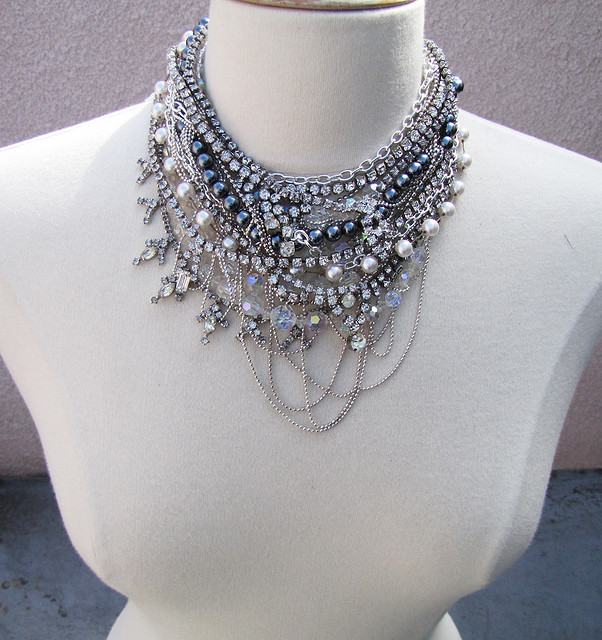We’ve always decorated ourselves—from animal teeth, bones, feathers and shells to aristocratic jewels housed in museums—these adorned the bodies of our ancestors.
Seeing ancient necklaces behind glass can make it tempting to imagine their long-gone wearers as having used them for different reasons than us. However, even those gold-coloured studs on our pre-scuffed boots nod to a richer history.
Why do we decorate ourselves?
In the 40s, American psychologist Abraham Maslow came up with the “Hierarchy of Needs”—a pyramid with a base of physiological factors (y’know, like breathing), followed by safety, love/belonging, self-esteem, and self-actualisation at the very tip.
Looking at jewellery through Maslow’s eyes, wearing it would of course fall under our “higher” needs. For example, for the “love and belonging” section, jewellery can be used to attract mates through gift giving, or showing wealth. It was also used, and is still used, to show affiliation with a certain group.
Modern-day equivalents might be signets, engagement rings—even those “best friends,” necklaces we all probably have lying around somewhere.
The “self-esteem” category might reflect the fact that in the past, the richer you were, the more you were able to decorate yourself—but how about “self-actualisation?” Clearly, jewellery is still used for self-expression.
Whether it be a delicate chain or a choker, the pieces we wear send a little message to those passing us by. However, it can be taken one step further; as psychologist Amy Cuddy has said, the way we pose affects not just the way others see us, but the way we see ourselves.
To quote, “our bodies can change our minds, and our minds can change our behaviour, and our behaviour can change our outcomes.”
How does this translate to jewellery? How can the things we choose to wear change the way we see ourselves, the way we feel?
Personally, I have a necklace that someone very close to my heart gave me, and when I wear it, the metal on my skin reminds me of the warm intentions behind it. Alternatively, I feel empowered when I wear a certain silver ring I’ve had for years—because I decided that it would make me feel that way.
Of course, self-expression through items stretches beyond just jewellery. Our clothing, hats, shoes, bags—each item has the ability to carry a story for ourselves, and for others.
There are a number of ways that we reach “self-actualisation,” and in the grand scheme of things, it can be argued that a hoop of metal doesn’t mean very much. Despite this, jewellery is something we’ve been using through the ages to symbolise our intentions.
Standing in a museum, in front of the aforementioned ancient necklace, you may feel a strange connection to some long-gone individual—and the piece you’re wearing might do the very same in return one day.
~
Author: Nickie Shobeiry
Editor: Emma Ruffin
Photo: Flickr
~
Facebook is in talks with major corporate media about pulling their content into FB, leaving other sites to wither or pay up if we want to connect with you, our readers. Want to stay connected before the curtain drops? Sign up for our curated, quality newsletters below.







Read 0 comments and reply